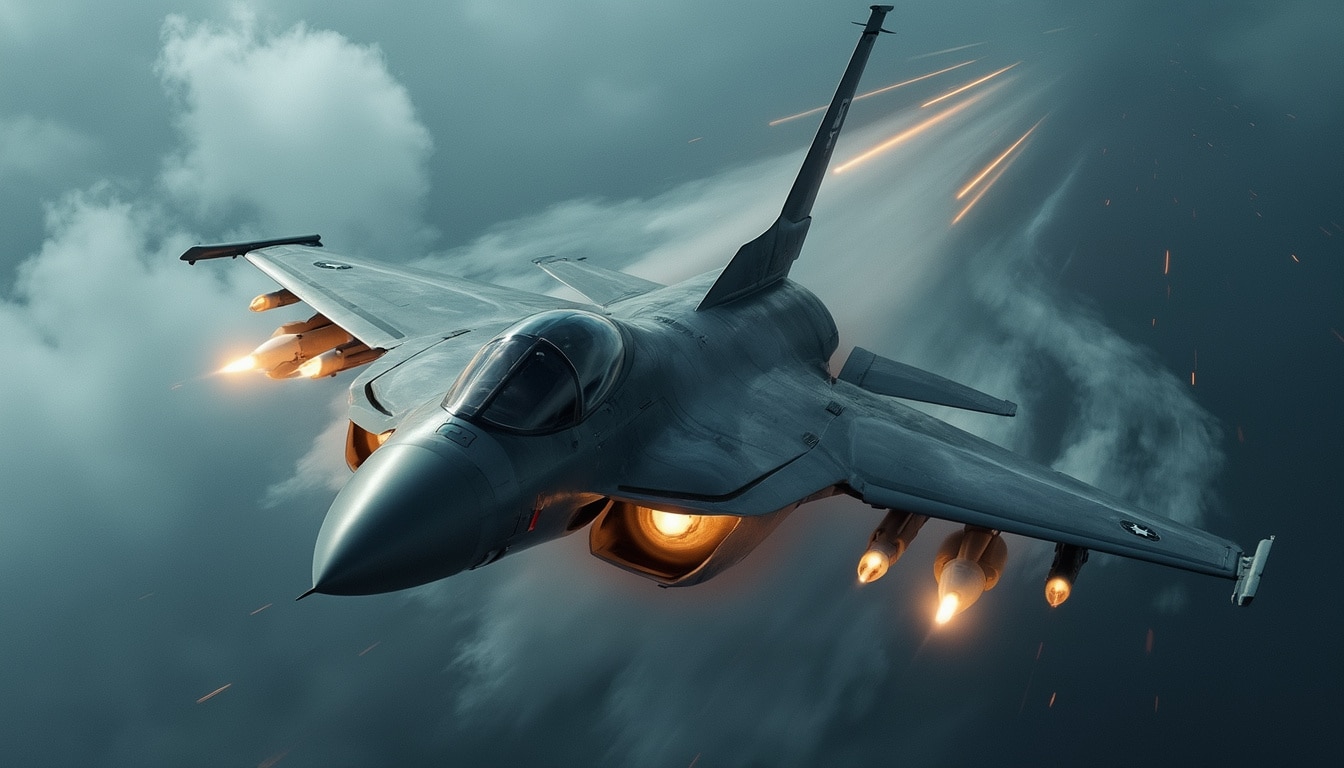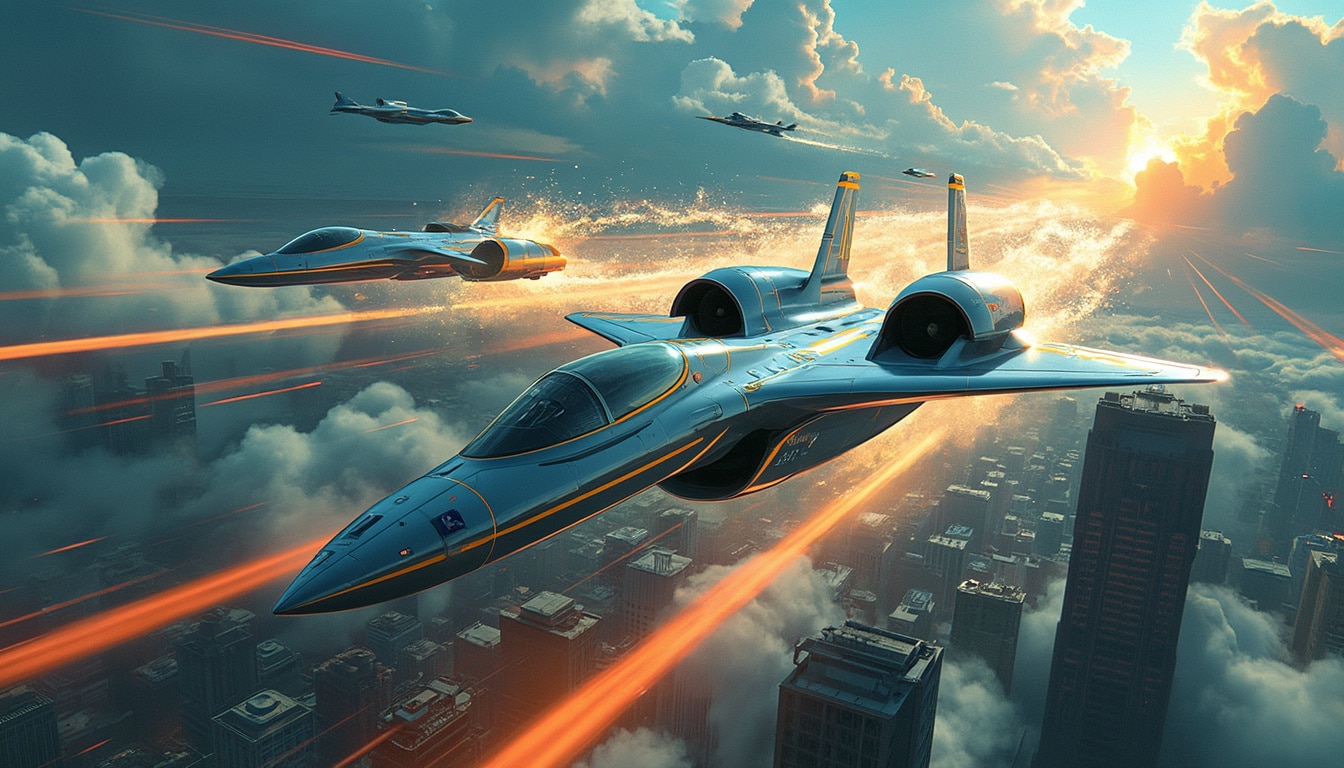The landscape of aviation technology has been forever changed by the incredible advancements in our understanding of aerodynamics and the engineering marvels created to harness this knowledge. Recently, NASA unveiled a captivating image that illustrates the exact moment a jet breaks the sound barrier. This stunning photograph not only captures the awe-inspiring nature of the moment but also serves as a testament to the remarkable achievements in both aerospace photography and the field of supersonic flight. With each second, aviation pushes the boundaries of what is possible, leading to scientific discoveries that excite enthusiasts and professionals alike.
What makes this image so mesmerizing is how it encapsulates a monumental shift in aviation history. For decades, military aircraft have pushed through the Mach speed threshold, a limit that was once thought to be unbreakable. Notably, this achievement now extends into civilian aviation, as companies like Boeing and innovative projects such as NASA’s X-59 aim to redefine air travel standards.
Through a blend of technological expertise and artistic vision, this photograph offers a glimpse into the future of aviation. It draws attention to the complexities and challenges faced in aerodynamics, while also igniting wonder about our endless quest for speed and efficiency in the skies. In the sections that follow, we will delve deeper into the details of this groundbreaking moment in aviation history.
The Science Behind the Sound Barrier
Understanding the sound barrier is integral to grasping its significance in aviation. When an aircraft travels, it displaces air in front of it, creating pressure waves. At lower speeds, these waves can dissipate easily, but as the aircraft approaches the speed of sound, known as Mach 1, these waves begin to compress and build up, creating a massive wavefront. This phenomenon results in a shocking explosion-like sound known as a sonic boom.

The Impact of Mach Speed on Aircraft Design
Aerodynamic efficiency is paramount when designing aircraft meant to exceed the speed of sound. Engineering teams must meticulously consider factors such as shape, weight distribution, and engine performance to reduce drag and enhance stability. The more streamlined the aircraft, the easier it is to reach Mach speed without compromising safety or performance.
Moreover, innovations like variable-geometry wings have come into play. These wings can change shape during flight to optimize airflow and reduce turbulence at different speeds. The evolution of materials has also ensured that modern jets can withstand the intense pressures encountered at supersonic speeds.
Military Aircraft and the Supersonic Legacy
The history of supersonic flight is deeply rooted in military aviation. Icons like the Concorde and various military jets were pioneers, breaking through the sound barrier and ushering in a new era. The F-14 Tomcat and the F-22 Raptor are examples of military aircraft that not only conquered sonic frontiers but also pioneered sophisticated technologies that have trickled down to civilian models.
As we reflect on these advancements, it’s crucial to remember the exploration and risks taken by those at the forefront of these innovations, paving the way for current and future aerospace projects.
NASA’s Role in Shaping Supersonic Flight
NASA has played an instrumental role in the evolution of aviation technology. By investing in research and development, NASA engineers have propelled innovation in various sectors of air travel. The agency’s focus on creating quieter supersonic aircraft like the X-59 is not only aimed at breaking sound barriers but also at minimizing the disruptive impacts of sonic booms over populated areas. Such advancements highlight the commitment to balancing progress and environmental concerns, leading to a more sustainable aviation future.
The stunning images captured during these flights serve as an inspiration, showing not only the technical prowess involved but also the beauty of flight and exploration. With NASA’s efforts, the dream of commercial supersonic travel may soon evolve, offering an exciting glimpse into the future of human-made air travel.
Captivating Images of Supersonic Flight
The recent NASA image showcasing a jet shattering the sound barrier is an embodiment of human achievement. Captured at the precise moment of breakthrough, the image reveals shockwaves radiating outward from the aircraft, creating an ephemeral spectacle in the sky. Such visuals compel viewers to appreciate the intersection of art and science, culminating in breathtaking aerospace photography. This photograph not only serves as a time capsule of a historic event, but also invites us to ponder the broader implications of this advancement.
The Artistic Value of Aerospace Photography
Aerospace photography transforms complex scientific concepts into accessible visual narratives. Through the lens of a camera, the intricacies of flight become tangible, bringing audiences closer to the awe that accompanies this high-speed reality. Each shot is a blend of precision and artistic expression, showcasing the delicate balance between human innovation and natural principles.
Beyond mere artistic merit, such images have practical applications in engineering and education. They aid in analyzing flight dynamics and improve understanding among the next generation of engineers and scientists. The relationship between art and science in aviation is essential, bridging gaps between disciplines, and reinforcing the importance of interdisciplinary approaches in discovering new frontiers.
Highlighting Historical Moments Through Images
Throughout history, significant events in aviation and aerospace exploration have been captured through photography, serving to document and celebrate human ingenuity. From the Wright brothers’ first flight to the launch of the Space Shuttle, each image tells a story of bravery, resilience, and discovery. The breathtaking visuals of jets breaking the sound barrier stand alongside these iconic moments, embodying the relentless human spirit to soar higher and faster.
In essence, these stunning images act as a bridge to the past, allowing us to remember the fearless innovators and industry leaders who dared to challenge conventional boundaries. Through this lens, we can honor their contributions while also viewing the future with optimism and excitement.
The Future of Supersonic Travel
The future of supersonic travel holds immense potential, fueled by ongoing advancements in technology and growing global interest in faster air travel. NASA’s research not only aims to break existing barriers but to redefine what is feasible for civilian flights. With the emergence of quiet supersonic jets, the dream of transcontinental travel in under three hours is inching closer to reality.

Collaboration in Aviation Innovations
Collaboration is a hallmark of modern aviation advancements. Leading manufacturers like Boeing are joining forces with NASA and other innovators to explore how best to bring supersonic technology to market. These partnerships are essential for addressing logistical challenges such as noise reduction, fuel efficiency, and safety concerns.
As engineers, scientists, and aviation enthusiasts work together, they illuminate new pathways toward advancement. The sharing of knowledge and expertise enriches the development of technology. Currently, projects like the Quiet Supersonic Transport (QueSST) are capturing both public interest and investment, showcasing the optimism surrounding the future of aviation.
Environmental Considerations and Efficiency
As society pushes for faster travel, environmental accountability has become increasingly important. Researchers are investigating sustainable fuels and flight paths that minimize environmental footprints. Technologies that reduce fuel consumption and emissions are gaining prominence among those committed to the future of sustainable aviation. The balance between achieving groundbreaking advancements and respecting planetary health exemplifies the maturity of the aerospace industry.
Looking to the future, the need for environmentally friendly solutions will shape how supersonic travel develops. Innovations that facilitate safety, comfort, and efficiency will emerge as top priorities for those seeking to redefine air travel in the years to come.
The Public’s Interest and Demand
The public has shown a growing interest in supersonic travel, driven by the desire for reduced flight times and an enhanced travel experience. As more people yearn for faster options, the aviation industry must be prepared to meet these demands. The revival of supersonic travel not only provides an exciting opportunity for travelers but also has implications for global economics, international trade, and tourism.
A future where supersonic jets operate as commercial entities could lead to a revolutionary shift in how we perceive air travel. As technology improves and interest rises, we may witness the dawn of a new era of flight, marked by speed, efficiency, and a seamless balance between human ingenuity and environmental stewardship.
With each passing day, the boundaries of what is possible in aviation continue to expand. The sound barrier is no longer merely a challenge; it is an invitation to explore the skies with renewed passion and ambition. The stunning images captured by NASA and the efforts of countless dedicated professionals create a foundation for future achievement, making flight more exhilarating and accessible than ever before.




Leave a Reply